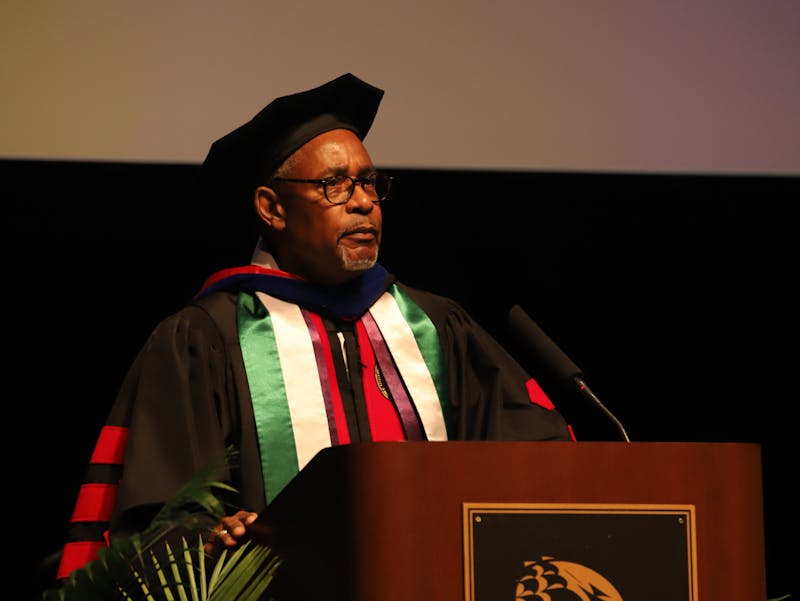Since he took office on Jan. 20, President Donald Trump has signed a flurry of executive orders aimed at fulfilling the promises he made during his 2024 presidential campaign.
Going after federal diversity, equity and inclusion (DEI) programs has been one of Trump’s main initiatives during the first two weeks of his second administration. This initiative includes executive orders aimed at reforming federal hiring practices and prohibiting transgender individuals from enlisting in the U.S. military.
On his first day of office, Trump signed Executive Order 14151, titled “Ending Radical and Wasteful Government DEI Programs and Preferencing.”
The aim of the order is to have the Office of Management and Budget and the Office of Personnel Management terminate DEI programs, mandates and policies throughout the government.
One of Trump’s main reasons for opposing DEI programs is that he believes they promote unfair hiring practices based on race or sex rather than personal merit. During his remarks at the World Economic Forum, Trump stated, “America will once again become a merit-based country. You have to hear that word: merit-based country.”
The president’s freeze on federal funding that was announced in a memo on Jan. 27 also targeted DEI, climate change and immigration programs that receive federal funding. The widespread confusion and legal battles that resulted from Monday’s memo caused it to be rescinded on Jan. 29.
Trump’s battles with federal DEI programs were not the only initiatives taken by the president during his first two weeks in office.
On Jan. 20, Trump issued about 1,500 pardons and commuted the sentences of 14 individuals convicted of offenses related to the Jan. 6, 2021, Capitol attack.
Democratic Rep. Nancy Pelosi, who was speaker of the House during the Jan. 6 attack, issued a statement regarding Trump’s pardons.
In her statement, she drew attention to the police officers who were harmed or killed during the riot, stating, “It is shameful that the president has decided to make one of his top priorities the abandonment and betrayal of police officers who put their lives on the line to stop an attempt to subvert the peaceful transfer of power.”
On issues of immigration and border policy, the president has also begun to fulfill promises he made during his campaign. During his inaugural speech, Trump stated that he would declare a national emergency at the southern border. Through executive orders, he has called for the border wall to be finished and has moved toward ending automatic citizenship for those born in the United States.
President Trump has begun a campaign toward halting what he has called an invasion by ordering the U.S. military to protect against drug and human trafficking and mass migration. Actions along the southern border are only one part of Trump’s immigration policy.
U.S. Immigration and Customs Enforcement (ICE) has been ramping up arrests since Trump took office. On Jan. 26, the agency posted on X that 956 arrests were made and 554 detainers were lodged, which notify other law enforcement about potential undocumented status.
The actions of ICE officers have triggered a battle in schools, with some Republicans arguing that ICE should be allowed to enter schools to search for undocumented students, particularly those who may be affiliated with gang activity.
In an interview with ABC News, Trump’s border czar Tom Homan said, “ICE officers should have discretion to decide that if a national security threat or a public safety threat is in one of these facilities, then it should be an option to make the arrest.”
This issue has received significant pushback from some public school districts, especially districts in blue cities that have higher concentrations of undocumented families. For these districts, it is the mission of their faculty to deny ICE officers entry to protect undocumented students.
The issue of ICE officers entering schools is expected to be challenged politically and legally in the months ahead. In California, state Sen. Sasha Renée Pérez (D-Pasadena) introduced the SAFE Act, which aims to establish a communication network in schools and college campuses so that students and faculty can be notified when ICE officers are present on the premises.
While Trump’s second administration has only just begun, it has been an active first two weeks. Still, the president releases executive orders and policies aimed at fulfilling his promises.



The Slate welcomes thoughtful discussion on all of our stories, but please keep comments civil and on-topic. Read our full guidelines here.